Your Data is Political
Your presence rises from scavenging: ages and words
and webs and signs. You’ve become a target but without
the old spy store gadgets. I’d like to know what you know,
not just your count. I click on you, then you click back,
precious darling surface. We add, poke, text.
On my iPhone, you’re called The Outlier.
Your profile pic of a yellow vase
is so allusory, so art, or your skirt flips up and you’re viral,
or someone else outs you as a double-crossing wife
because it’s Old West open season on Facebook.
Pages ripple with alacrity, with betrayal and Outlook keeps
the other engine purring and sneaky. Two presences.
The real and the fable vanish before you and to them
within barcode, a cornucopia of insight
(a family’s fleecing, caravans of product, blurry pirated video).
I’ll play Sarah McLachlan over your visage, elegiac, or someone
will paste your face onto the porno performance artist
baptized with secretion. I’ll be the cultural anxiety,
and you can be the Luddite. We’ll be a perfect pairing
of antediluvian (the wine) and digital (the host).
by Carmen Giménez Smith
from: Milk & Filth
University of Arizona Press, 2013

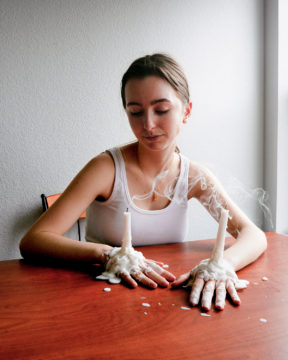 Standing in the middle of a room previously inhabited by a now-absent figure can conjure an eerily potent atmosphere, traceable through sensations rather than words. Perhaps it’s because so much of what shapes the edges of any individual’s persona resides within the colors they prefer, their cooking and cleaning smells, or the sounds they regularly hear emanating from the pipes in their walls or a creak in their floorboards. When a person’s body exits their habitat, all the things that previously swirled in and around their tangible body remain, suspended in the air in a thick, viscous hum. These remnants permeate the objects the person leaves behind, too, charged with energy, appearing as sentient creatures rather than a lifeless pile of stuff.
Standing in the middle of a room previously inhabited by a now-absent figure can conjure an eerily potent atmosphere, traceable through sensations rather than words. Perhaps it’s because so much of what shapes the edges of any individual’s persona resides within the colors they prefer, their cooking and cleaning smells, or the sounds they regularly hear emanating from the pipes in their walls or a creak in their floorboards. When a person’s body exits their habitat, all the things that previously swirled in and around their tangible body remain, suspended in the air in a thick, viscous hum. These remnants permeate the objects the person leaves behind, too, charged with energy, appearing as sentient creatures rather than a lifeless pile of stuff. Moments of sociopolitical tumult have a way of generating all-encompassing explanatory histories. These chronicles either indulge a sense of decline or applaud our advances. The appetite for such stories seems indiscriminate—tales of deterioration and tales of improvement are frequently consumed by the same people. Two of Bill Gates’s favorite soup-to-nuts books of the past decade, for example, are Steven Pinker’s “
Moments of sociopolitical tumult have a way of generating all-encompassing explanatory histories. These chronicles either indulge a sense of decline or applaud our advances. The appetite for such stories seems indiscriminate—tales of deterioration and tales of improvement are frequently consumed by the same people. Two of Bill Gates’s favorite soup-to-nuts books of the past decade, for example, are Steven Pinker’s “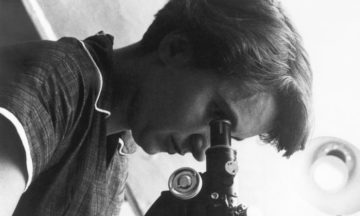 T
T Merchant and Ivory, normally working with the writer Ruth Prawer Jhabvala, were one of the most dominant cinematic forces of the late 20th century, rolling out luxuriously appointed adaptations of E.M. Forster and Henry James novels, with the occasional more contemporary anomaly like Tama Janowitz’s “Slaves of New York.” Merchant died in 2005; Jhabvala in 2013. After decades conjuring the Anglo-American aristocracy clinking cups in gardens and drawing rooms, Ivory, the survivor, is ready to spill the tea.
Merchant and Ivory, normally working with the writer Ruth Prawer Jhabvala, were one of the most dominant cinematic forces of the late 20th century, rolling out luxuriously appointed adaptations of E.M. Forster and Henry James novels, with the occasional more contemporary anomaly like Tama Janowitz’s “Slaves of New York.” Merchant died in 2005; Jhabvala in 2013. After decades conjuring the Anglo-American aristocracy clinking cups in gardens and drawing rooms, Ivory, the survivor, is ready to spill the tea. Benjamin Braun and Adrienne Buller also in Phenomenal World (image: Joëlle Tuerlinckx,
Benjamin Braun and Adrienne Buller also in Phenomenal World (image: Joëlle Tuerlinckx, 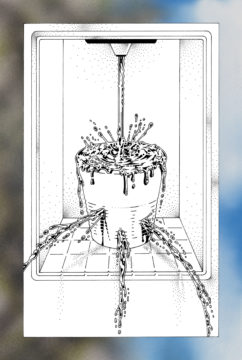 Ajay Singh Chaudhary in The Baffler (image
Ajay Singh Chaudhary in The Baffler (image  Herman Mark Schwartz in Phenomenal World:
Herman Mark Schwartz in Phenomenal World: Something unnatural
Something unnatural To be a literary biographer is to court the extravagant ridicule of the very people you write about. For all of the salutary services a writer’s biography can offer — the tracing of the life, the contextualizing of the work, the resuscitation of a reputation and the deliverance from neglect — the biographer has been derided as a “post-mortem exploiter” (Henry James) and a “professional burglar” (Janet Malcolm).
To be a literary biographer is to court the extravagant ridicule of the very people you write about. For all of the salutary services a writer’s biography can offer — the tracing of the life, the contextualizing of the work, the resuscitation of a reputation and the deliverance from neglect — the biographer has been derided as a “post-mortem exploiter” (Henry James) and a “professional burglar” (Janet Malcolm).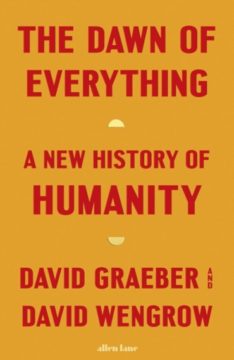 The standard history of humanity goes something like this. Roughly 300,000 to 200,000 years ago, Homo sapiens first evolved somewhere on the African continent. Over the next 100,000 to 150,000 years, this sturdy, adaptable species moved into new regions, first on its home continent and then into other parts of the globe. These early humans shaped flint and other stones into cutting blades of increasing complexity and used their tools to hunt the mega-fauna of the Pleistocene era. Sometimes, they immortalized these hunts—carved on rock faces or painted in glorious murals across the walls and ceilings of caves in places like Sulawesi, Chauvet, and Lascaux.
The standard history of humanity goes something like this. Roughly 300,000 to 200,000 years ago, Homo sapiens first evolved somewhere on the African continent. Over the next 100,000 to 150,000 years, this sturdy, adaptable species moved into new regions, first on its home continent and then into other parts of the globe. These early humans shaped flint and other stones into cutting blades of increasing complexity and used their tools to hunt the mega-fauna of the Pleistocene era. Sometimes, they immortalized these hunts—carved on rock faces or painted in glorious murals across the walls and ceilings of caves in places like Sulawesi, Chauvet, and Lascaux. It’s easy to mock the Corporation Formerly Known As Facebook. Mark Zuckerberg’s announcement that Facebook would
It’s easy to mock the Corporation Formerly Known As Facebook. Mark Zuckerberg’s announcement that Facebook would  A LITTLE OVER halfway through his 1943 novel El luto humano (Human Mourning), the Mexican writer José Revueltas inserts himself as a character so unobtrusively that it’s easy to miss. A government go-between, when hiring an assassin to kill the leader of an agricultural strike, complains, “First there was the agitation sown by José de Arcos, Revueltas, Salazar, García, and the other Communists. […] And now all over again…” It’s a sly wink at the fact that the novel’s scenario overlaps with the author’s life; it also foreshadows the way that Revueltas’s place in Mexican letters today is inextricably entwined with his dramatic biography.
A LITTLE OVER halfway through his 1943 novel El luto humano (Human Mourning), the Mexican writer José Revueltas inserts himself as a character so unobtrusively that it’s easy to miss. A government go-between, when hiring an assassin to kill the leader of an agricultural strike, complains, “First there was the agitation sown by José de Arcos, Revueltas, Salazar, García, and the other Communists. […] And now all over again…” It’s a sly wink at the fact that the novel’s scenario overlaps with the author’s life; it also foreshadows the way that Revueltas’s place in Mexican letters today is inextricably entwined with his dramatic biography.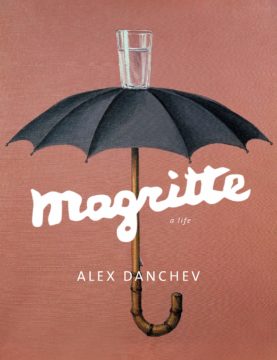 The instant recognisability of Magritte’s work has its roots not in his training at the Académie Royale des Beaux-Arts in Brussels from 1916 to 1918 but in his postwar work as a draughtsman in the city from 1922 to 1926. During this time he made artworks for advertising companies and designed wallpaper and posters. The skills garnered from the first two of these are immediately evident in Golconda, now in the Menil Collection in Houston, Texas. The bowler-hatted men, part Thomson and Thompson, part Gilbert and George, are as obviously Magritte’s logo as the part-eaten apple is that of a certain American computer giant. His eye for pattern was also acute. Golconda would make lovely wallpaper, and no doubt has.
The instant recognisability of Magritte’s work has its roots not in his training at the Académie Royale des Beaux-Arts in Brussels from 1916 to 1918 but in his postwar work as a draughtsman in the city from 1922 to 1926. During this time he made artworks for advertising companies and designed wallpaper and posters. The skills garnered from the first two of these are immediately evident in Golconda, now in the Menil Collection in Houston, Texas. The bowler-hatted men, part Thomson and Thompson, part Gilbert and George, are as obviously Magritte’s logo as the part-eaten apple is that of a certain American computer giant. His eye for pattern was also acute. Golconda would make lovely wallpaper, and no doubt has.